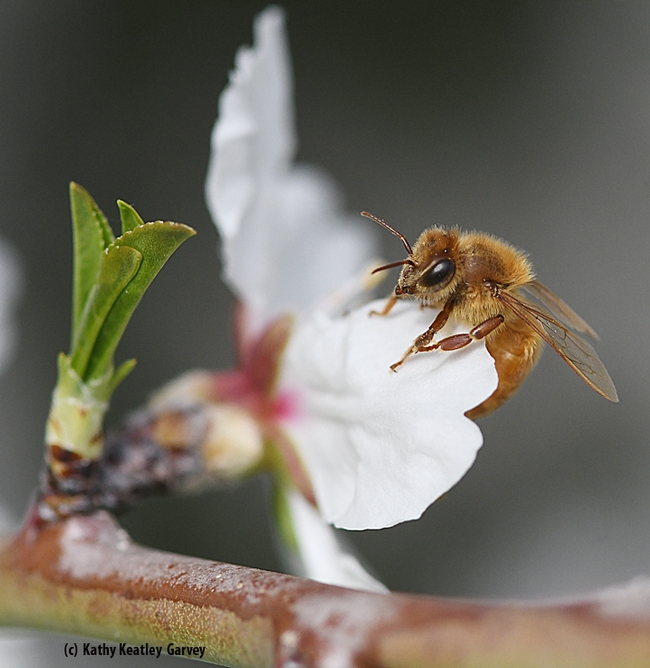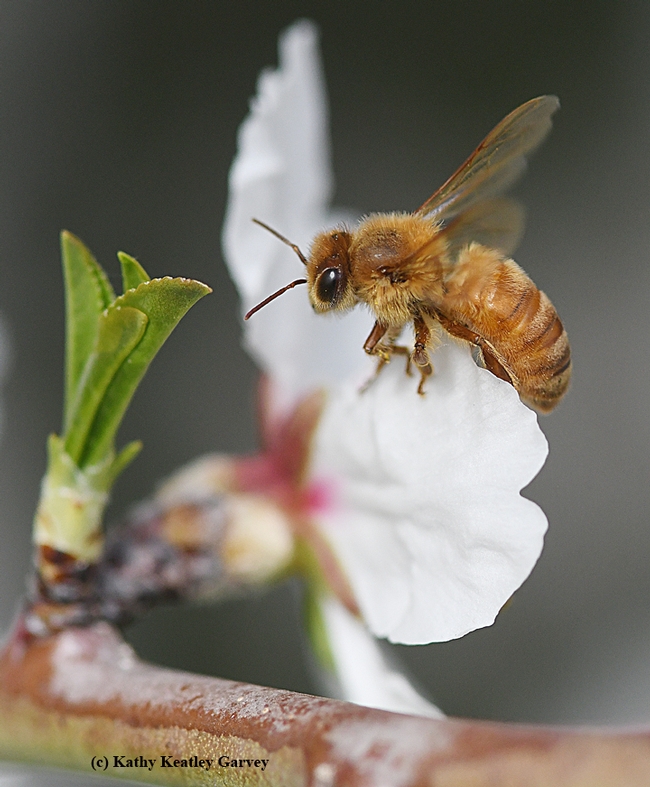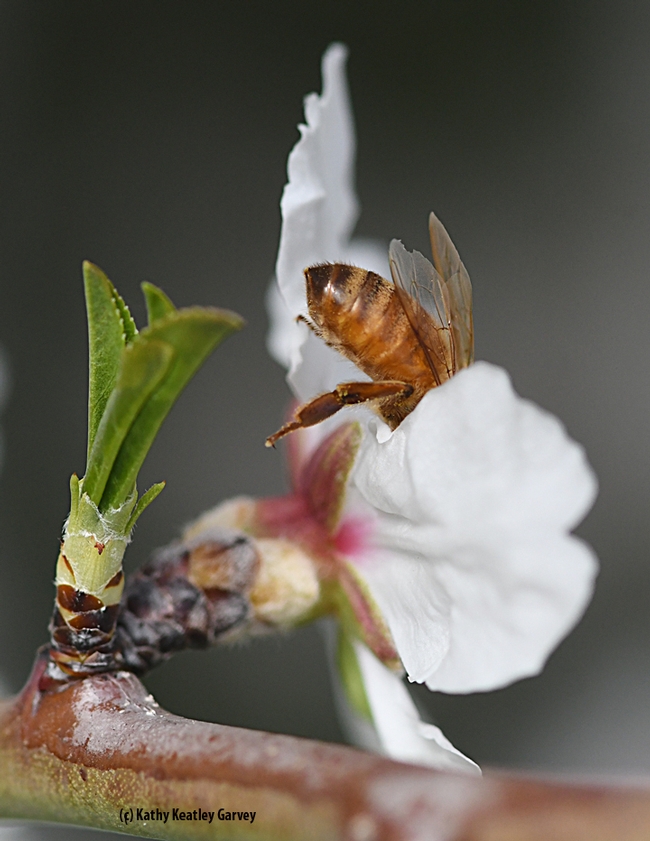Did you hear that buzz in California's almond orchards?
It takes about two colonies per acre to pollinate California's 1.2 million acres of almonds. That's about 2.5 million bee colonies trucked here from throughout the country.
And now the 2020 almond pollination season, which began around Valentine's Day, is ending, not with a buzz, but with somewhat of a bang as growers worry about whether they'll have enough bees for next season.
In a Jan. 22 article in Ag Alert, assistant editor Christine Souza covered the situation well. In noting that California has some 1.2 million bearing acres of almond trees, she pointed out: "As another 300,000 almond acres come into production in the next few years, beekeepers and farmers say an additional 600,000 beehives will be needed for pollination. Achieving that could be somewhat daunting, as beekeepers report annual bee losses due to challenges such as reduced forage, the Varroa mite and pesticide-related issues."
In a forecast article published Jan. 6 in West Coast Nut on "2020 Almond Pollination Market: Economic Outlook and Other Considerations," Brittney Goodrich, assistant Cooperative Extension specialist, UC Davis Department of of Agricultural and Resource Economics, wrote that the total yield in pounds per acre is "projected at 1,880, down 10 percent from 2019 (United States Department of Agriculture (USDA) National Agricultural Statistics Service (NASS) and California Department of Food and Agriculture (CDFA), 2019). Not all of this was due to poor pollination, growers also experienced less than ideal weather conditions throughout the rest of the growing season."
Goodrich also mentioned that:
- "As of October 15, 2019, almond prices were between $2.63 to $2.98 per pound depending on the variety. Prices have remained fairly steady in this range since 2016 (Champetier, Lee, and Sumner, 2019). Almond returns per acre have also remained fairly steady since 2016, though these returns seem small when compared with the 2013-2015 time period with almond prices well above $3 per pound."
- "Pollination expenses as a percentage of operating costs have increased from 6.7 percent in 1998 to 20 percent in 2016 (Champetier, Lee, and Sumner, 2019)."
- "As expected, counties in the San Joaquin Valley have the highest amount of planted acreage."
- "With the exception of Contra Costa and Sacramento counties in Northern California, increases as a percentage of bearing acreage by county range from 0.2 percent to 6.5 percent of total bearing acreage. Contra Costa and Sacramento counties each saw increases over 40 percent, but combine for a total planted acreage of 217 acres in 2018."
- According to the California State Beekeepers' Association, "average almond pollination fees have gone up around $5 per colony per year since 2017. The range in fees seems to have grown over time, in 2019 there is more than a $60 difference per colony between the lowest and highest fee reported. From talking with others in the industry, the average fee of $195 in 2019 may be on the lower side. Fees for a majority of colonies likely ranged from $200 to $220 per colony in 2019."
Meanwhile, take a look at the honey bees foraging on an almond near the Harry H. Laidlaw Jr. Honey Bee Research Facility on Bee Biology Road, UC Davis campus.
Attached Images:

A honey bee pollinating an almond tree on Bee Biology Road, UC Davis campus. (Photo by Kathy Keatley Garvey)

Up over and around...a honey bee circles an almond blossom. (Photo by Kathy Keatley Garvey)

Bottoms up! A honey bee foraging on an almond blossom on an older tree on Bee Biology Road. (Photo by Kathy Keatley Garvey)